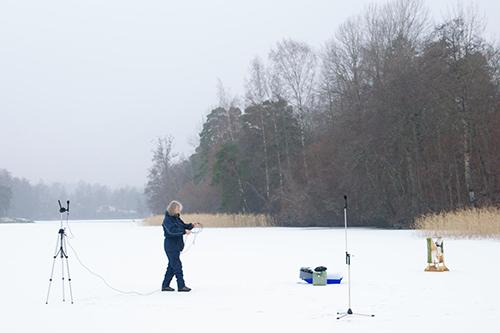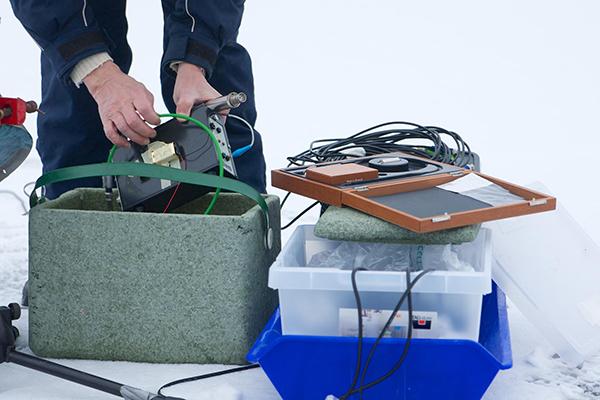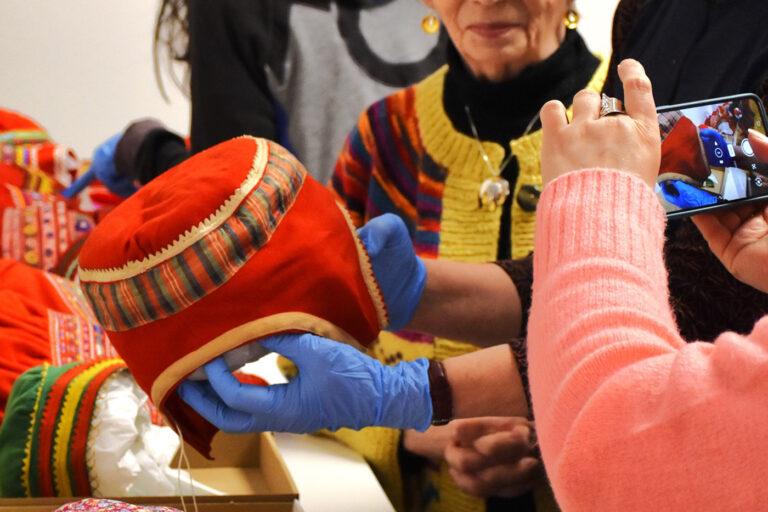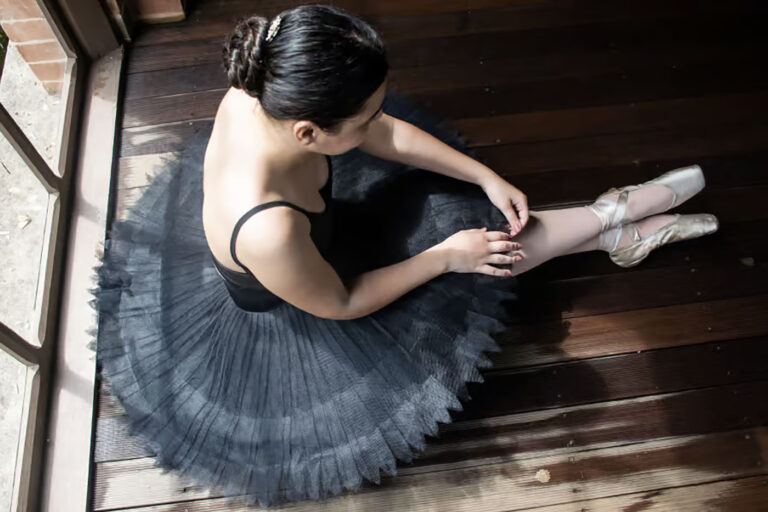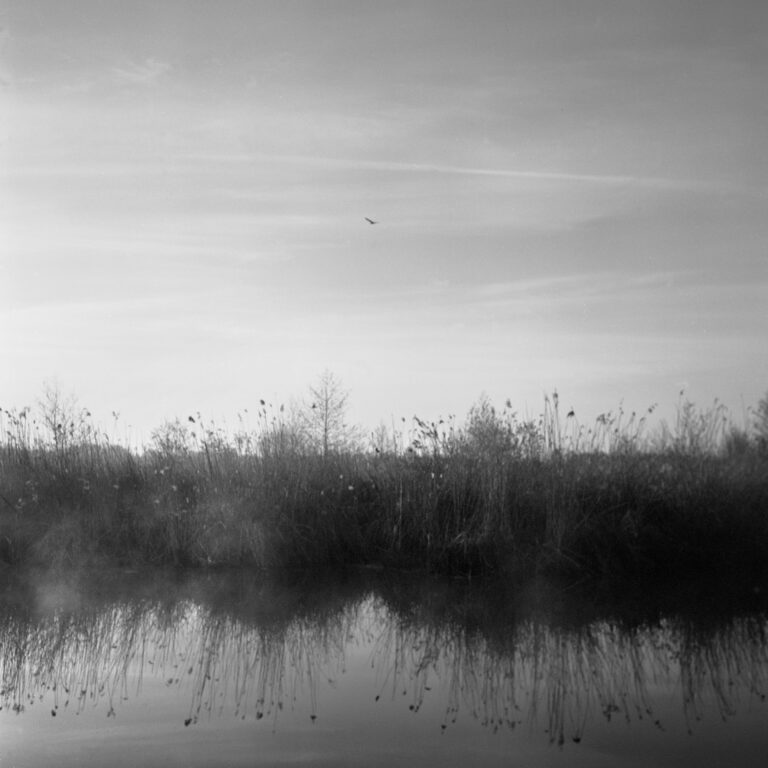The Whisper of the Aurora
In 2015, Professor Unto K. Laine received a grant of EUR 26,000 from the Finnish Cultural Foundation for studying sounds of the Northern Lights and meteorites.
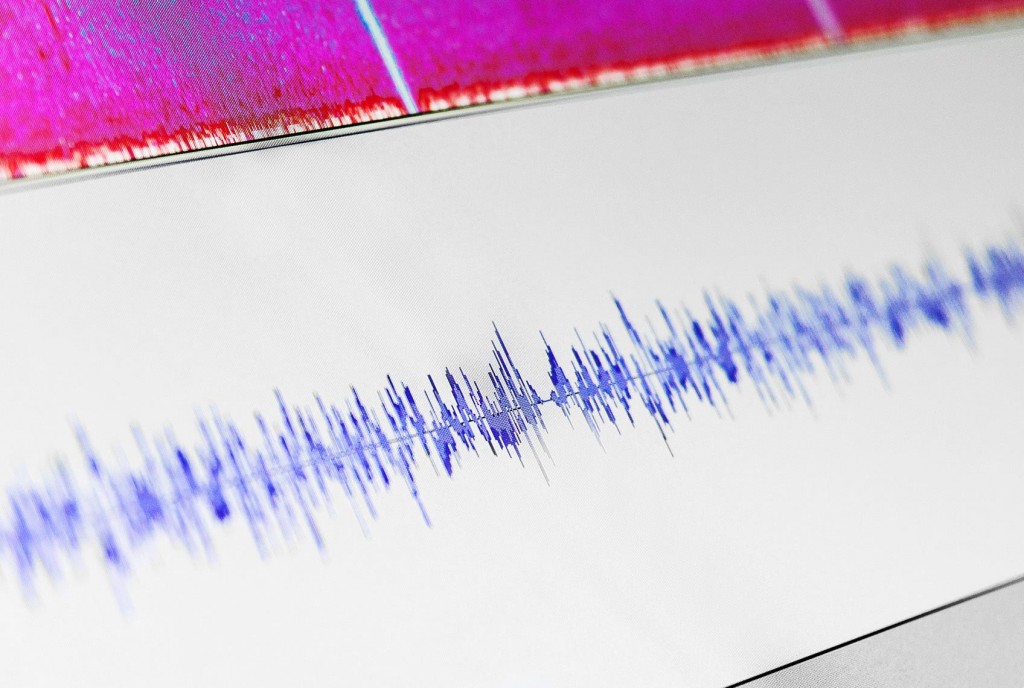

It is as if a woman is whispering “OK” amidst the noise. Unto K. Laine, professor of acoustics at Aalto University, is playing a recording made in North Karelia during a display of the Aurora Borealis.
It is as if a woman is whispering “OK” amidst the noise.
According to Laine, the sounds produced by the Northern Lights may also recall a waterfall, crackling or banging. For centuries, people around the world have told stories of the sounds, but many scientists remain sceptical.
– As recently as fifteen years ago, such stories were dismissed as products of the imagination, Laine explains. He decided to look into the subject. After spending hundreds of nights making recordings, Laine is probably the only person in the world to document the sounds of the Aurora Borealis.
Laine is the first acoustics expert to study the phenomenon, and he believes that this has been crucial to his success. He has built much of the equipment himself, and he needs hypersensitive microphones. Laine uses three microphones so that he can determine the direction accurately. The site must be open and very quiet.
– Picking the sounds is like hitting the jackpot. It must be dead calm and not too humid, and there must be a real show going on in the sky.
Laine started studying the phenomenon in the year 2000, and his first successful recording followed shortly after that. In April that year, one of his students phoned and asked him to look out of the window.
– There was a fantastic light show going on. There was no time to waste, says Laine, recalling the situation.
He grabbed his recording equipment and soon found himself standing in the freezing cold and listening to the crackle with a cheap microphone.
– That prompted me to buy better equipment.
How can the sounds of the Aurora Borealis still be a source of controversy? Laine, too, is puzzled by this.
– The Northern Lights have inspired fear all around the world, and this may still be the case.
The fact that the sounds have been dismissed as imaginary is one reason why Laine started studying the subject. Many people have been reluctant to talk about the sounds that they have heard because they are afraid of being branded as crazy.
– I have read stories of people that had heard these sounds and experienced an ethical awakening. I thought that maybe these people are right and have simply been unfairly derided. I felt that I had to take a closer look at the subject.
The physical origin of the phenomenon remains a mystery.
Laine believes that as the aurora is moving, the electromagnetic field also changes and triggers off a phenomenon that creates sounds at altitudes of less than 100 metres.
Laine is now planning to make new recordings, and he is checking the old ones. He hopes that one day computers will be able to pick the right sounds automatically from the recordings. Ultimately, findings by independent research groups are also needed as the final proof.
However, Laine has already convinced many of his colleagues. In summer 2014, a research team from Northern Ireland studying meteorite sounds contacted Laine and expressed its willingness to cooperate on the subject. As meteors burn up at an altitude of 20 kilometres, the sounds produced by them should not be audible. However, meteor sounds have been recorded and they may originate in the same manner as the sounds produced by the Northern Lights.
Text: Jenni Heikkinen
Photos by Janne Kommonen and Harri Tahvanainen
